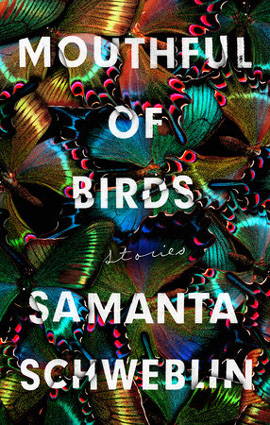While there have been many think pieces about the potential joys, pitfalls and dangers of our social media age, I haven’t read much fiction which imaginatively and realistically tackles these issues. “Little Eyes” presents a society where mechanical stuffed animals called “kentukis” become a new craze for people around the world – from an idle boy in Antigua to a pensive artist’s wife in Oaxaco to a lonely old woman in Lima. The cute mechanized animals are fitted with a camera which links to an anonymous controller or “dweller” who voyeuristically watches the life of the owner or “keeper”. Samanta Schweblin puts her characteristic dark spin on this story as a series of characters find themselves entangled in connections which spiral out of control and threaten to overwhelm them.
It feels entirely plausible that this is a device which would catch on and become a thing. It's like a cross between reality TV, social media apps and a robotic pet. The characters are initially confused about why they want to either own a kentukis or inhabit one, but they're drawn to it out of curiosity and gradually find themselves addicted. The anonymous connections they create introduce power plays between keepers and dwellers. It's clever how the novel shows hidden aspects of the characters' personalities emerging through their interactions with the devices in surprising and unforeseen ways. Some might become exhibitionistic or needy or amorous or jealous or even sadistic.
The kentukis come to fulfil what's lacking in many people's lives and thus provide them with a controlled double existence: “She had two lives, and that was much better than barely having one and limping around in free fall.” But the counter life that the kentukis provide gradually get out of control. A bit of indulgent fun becomes deadly serious as the virtual interactions spill over into real life. Several of the storylines become quite tense such as a kentukis who witnesses a kidnapping while others are more meditative such as a boy who completely loses himself as a dweller wanting only to exist within a liberated kentukis dragon.
Like with all new technology there are good and bad consequences to it becoming a fixture in so many people's lives. While it's easy to focus on the sensationalized negative consequences of the devices, I appreciate how Schweblin also explores the benefits they provide. I also enjoyed how this novel made me think more deeply about my own online interactions and my ambivalence about participating in so many social media platforms. Often we can plunge into various online activities and find ourselves swept into the novelty of recreating ourselves and participating in interactions with largely unknown people around the world. The consequences of doing so might be disappointingly banal or surprisingly revelatory, but they give us new ways to test the shape of our identities. Schweblin's novel is an entertaining, compelling and fascinating exploration of this.












